
Feel free to add tags, names, dates or anything you are looking for
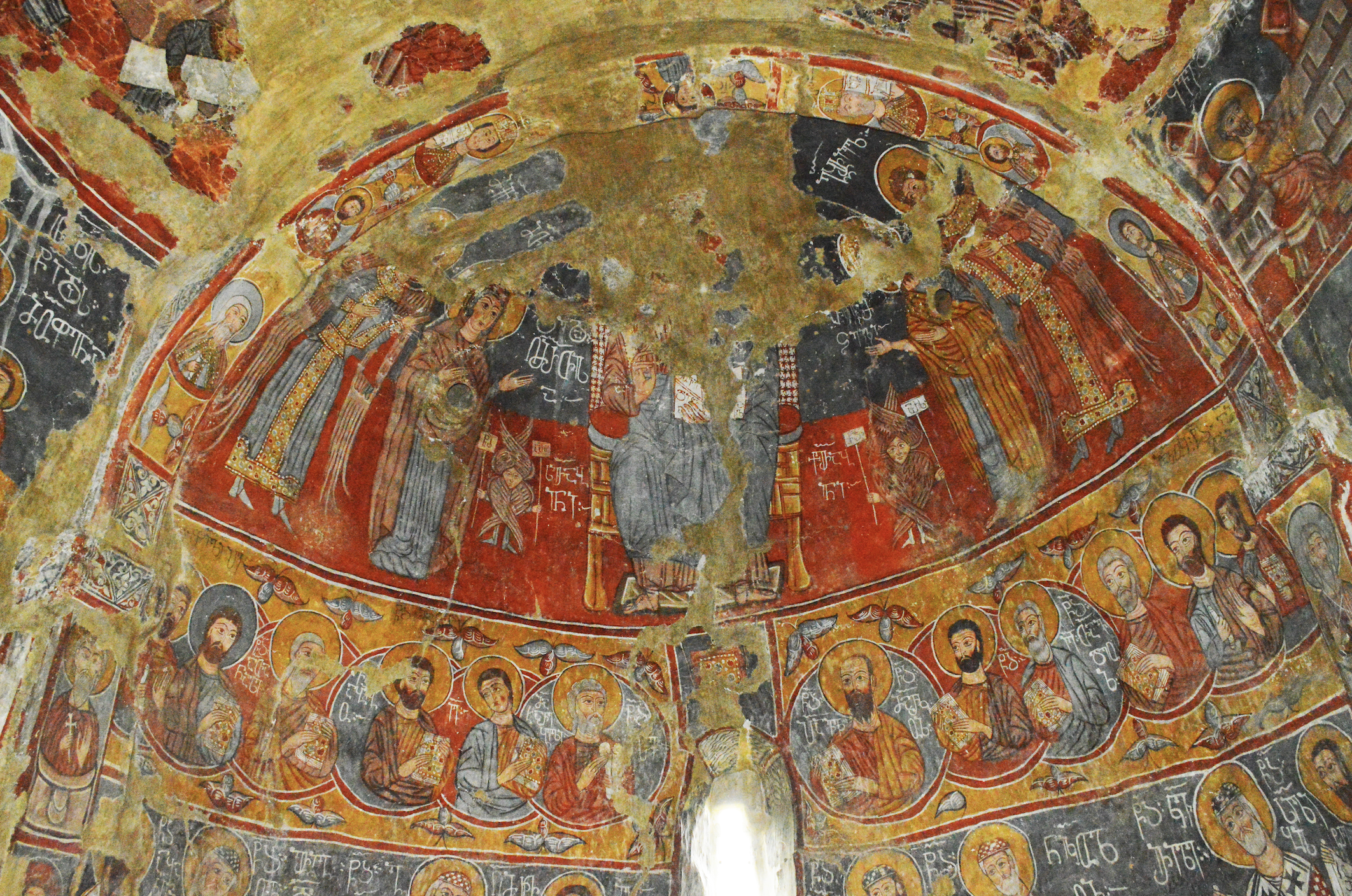

The village of Bugeuli is located in Racha, in the highlands of western Georgia, not far from the regional center Ambrolauri.
Bugeuli, church of the Archangels, 15th-16th cc
The 15th-16th century single-nave church built of well-hewn stones stands in the cent of the village cemetery. Both the building and the murals in the interior suffered greatly from an earthquake in 1991.
The painting dates from the 16th century, and belongs to the so-called “vernacular (folk) painting” trend that was quite widespread in both east and west Georgia in the 15th-16th centuries. During the period in question, these murals represented a coherent group that was strongly distinguished and “opposed” to the official style mostly influenced by Athonite and Cretan art.
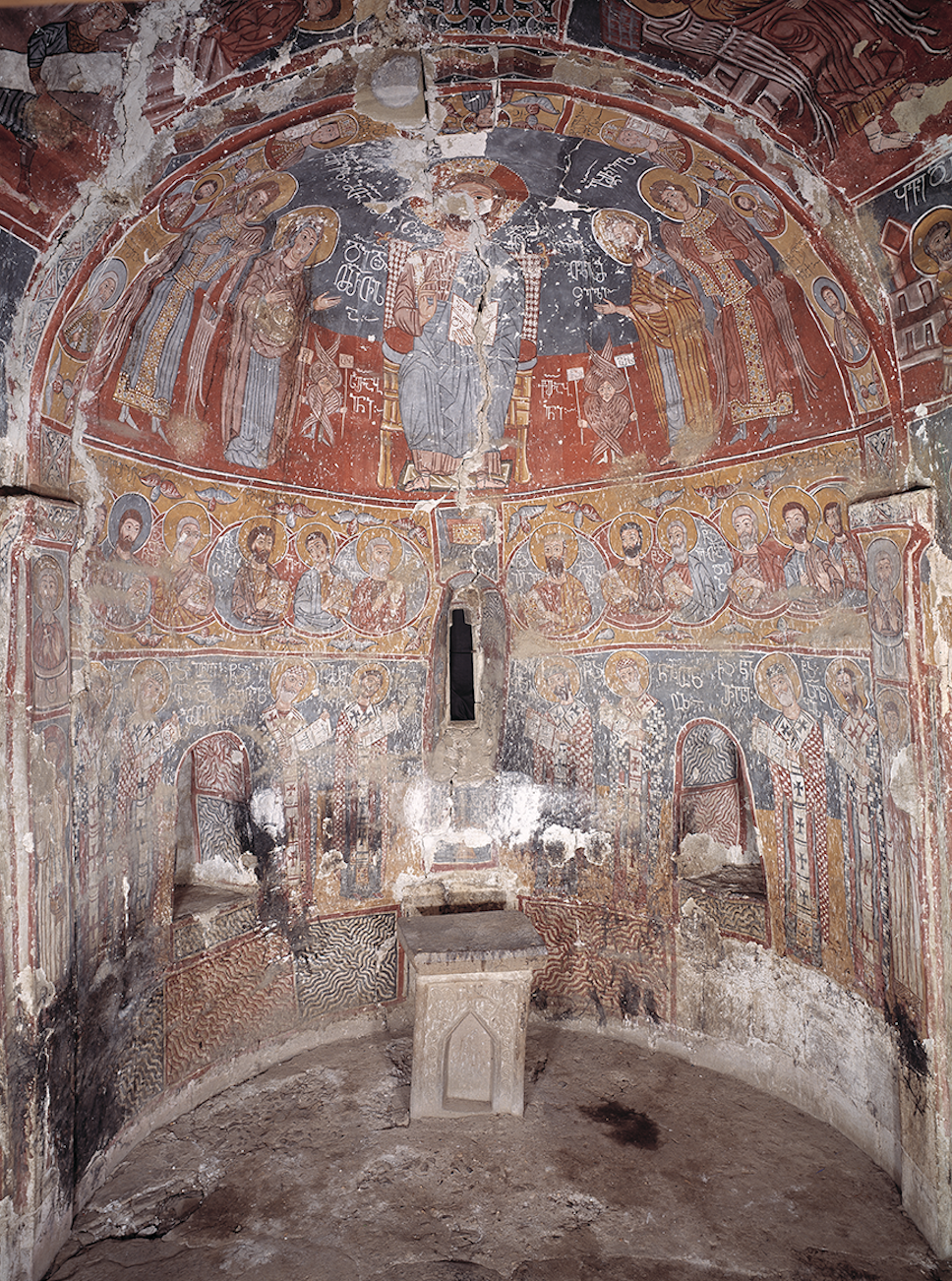
Bugeuli church, wall painting in the Sanctuary, 16th c
Murals adorn the entire interior of the church, and reveal an interesting and rather sophisticated program.
In the conch of the sanctuary apse, there is a traditional image of the Deisis with hosts of angels and cherubs on either side behind figures of the Virgin and St. John the Baptist, highlighting the eschatological aspect of the Deisis.
Bugeuli church, Deisis, wall painting in the sanctuary conch, 16th c
In the narrow register beneath, half figures of the Apostles inscribed in medallions with floral ornaments around them are portrayed on a bright yellow background. It is noteworthy that three figures of the Apostles are replaced with the figures of a Holy Bishop, a Holy Prophet and a Holy Martyr.
Bugeuli church, Holy Apostles, wall painting in the apse, 16th c
The lower register is dedicated to the composition of Melismos (the Veneration of the Holy Host): a row of Holy Bishops are turned towards the center, where the Christ-child is depicted in a chalice.
The vault and the walls of the church are decorated with scenes from the Christological cycle that are elaborated with several specific scenes: Joseph rebukes the Virgin, the Deposition from the Cross and the Lamentation.
Bugeuli church, Jozef rebukes the Virgin, 16th c
The Christological Cycle is distributed in a rather peculiar sequence: neither in a chronological nor in a liturgical way, perhaps rather conveying some kind of specific message.
The upper registers (the vault and the west wall) comprise the initial scenes of the Incarnation: The Annunciation, the Nativity, the Presentation in the Temple, the Baptism; the Transfiguration and the Ascensionare paired in one compositional frame. Next to them, the Raising of Lazarus is presented.

Bugeuli church, the Nativity, 16th c
The second register is less ordered, and less regular, with a confused arrangement: the sequence of the scenes is incoherent and the horizontal borders are not on an equal level. On the south wall under the Annunciation, three scenes are inserted between the registers that are not in chronological sequence: Joseph rebukes the Virgin, the Deposition and the Veneration of the Sacrifice. The narrative continues with the Entry into Jerusalem, the Crucifixion, the Anastasis, the Dormition and the Pentecost.
Quite unexpectedly, under the Entry into Jerusalem, the Second Coming is depicted as a small scene of a much abbreviated (abridged) type – in a brief iconographic version, as if it were an ordinary scene of the Feast Cycle in line with the other images.
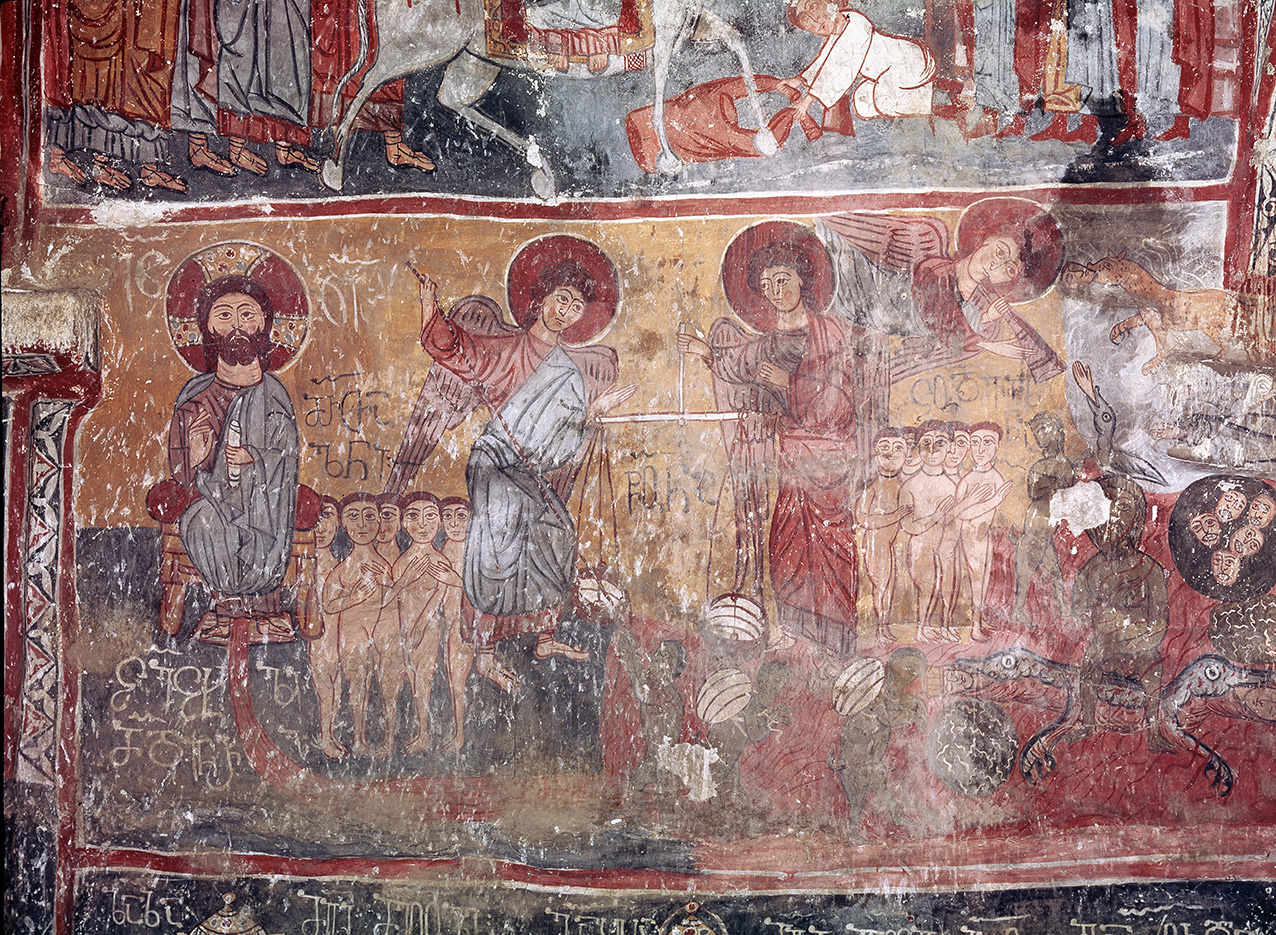
Bugeuli church, The Last Judgment, 16th c
The lowest register, although not of equal height, is dedicated to figures of the ktetors on the side walls, and the patrons of the church: the Holy Archangels and an equestrian St. George slaying the dragon on the west wall.
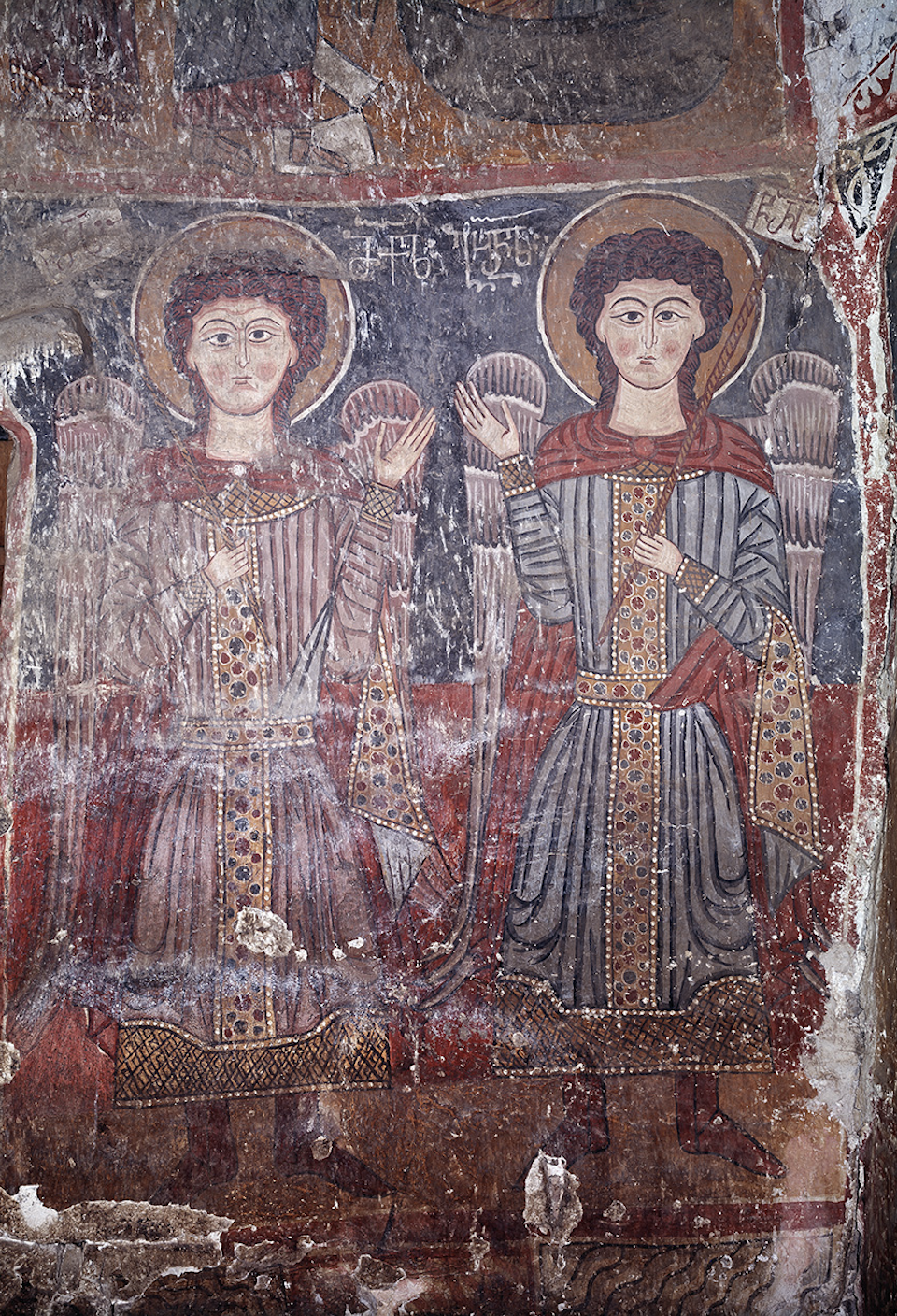
Bugeuli church, Archangels, 16th c
There are fourteen figures of the ktetors – local feudal lords and members of the Lashkhishvili family. The head of the family, Lashkha Lashkhishvili, is portrayed with a model of a church – thus emphasizing his function as the main commissioner. The row of ktetors on the side walls consists of beautifully dressed ladies and men with large moustaches in festive postures.

Bugeuli church, ktetors from the Lashkhishvili feudal Family, 16th c
The row of ktetors is represented almost at ground level. The impression created is that the members of the Lashkhishvili family are surrounding beholders, dwelling in the same space as the congregation. They are clad in extremely beautiful vestments with excellently embroidered patterns, fur trims, and other accessories.
It is noteworthy that the posture of these figures is in contrast to the earlier tradition of three-quarter turns towards the sanctuary or the figure of the patron saint. In the post-Byzantine period, the figures of ktetors in Georgian murals are depicted strictly frontally – gazing not at the saints, but rather at the congregation in the real space of the church. This reveals the main motivation behind the portraits: the donors are more interested in the attitudes of their contemporaries rather than in their celestial patrons.

Bugeuli church, portrait of the ktetor, 16th c
The scenes are framed with wide bands of ornaments, and decorative motifs are also inserted in the compositions. The overall layout is tapestry-like. The coloring is particularly attractive and expressive, based on bright hues: yellow, red and orange contrasted with white, dark blue and bluish gray.
The artistic manner is somewhat “primitive,” with its simplicity of rendering, the flatness of the figures, the straight and angular drawn lines, the thick and rather coarse outlines, and an overall “carpet-like” layout of the compositions, as well as the distorted proportions of the figures, with their large eyes and naïve smiles; and can thus be defined as primitive, provincial painting. Nonetheless, the murals at Bugeuli display a particular charm, conveying an impression of freshness and naïve expressiveness; an air of naivety, frankness, artlessness, simple-heartedness, utilizing an extremely attractive and impressive color palette, a festive character, and even monumentality.
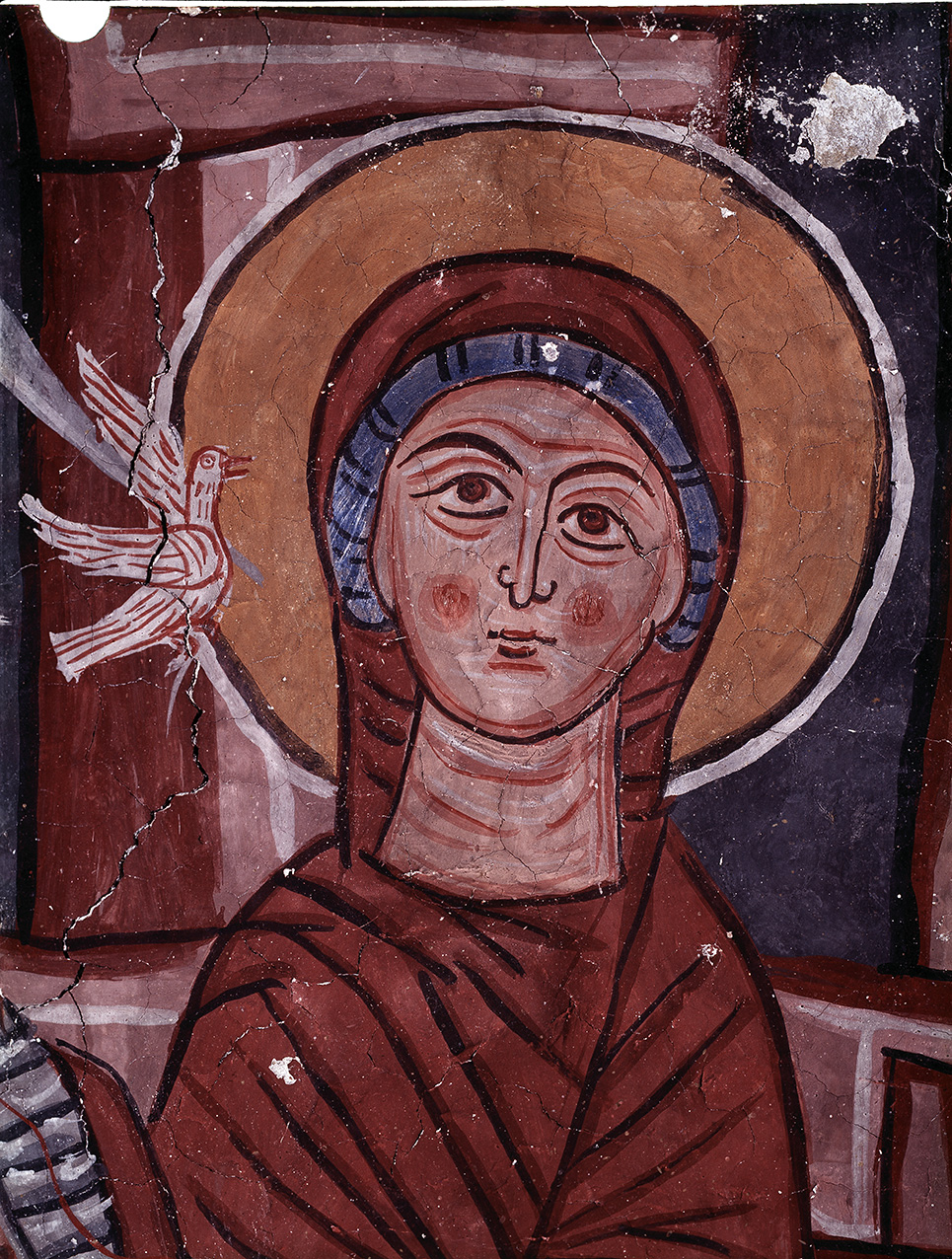
Bugeuli church, The Virgin Mary, the Annunciation, detail, 16th c
Moreover, although the formal rendering of the painting appears simple and even primitive, the theological content is rather sophisticated and complex in nature. In a way, they resemble the paintings of Niko Pirosmani – the renowned Georgian painter of the early 20th century. Certain scholars believe that the works of Pirosmani were influenced by murals of this kind.
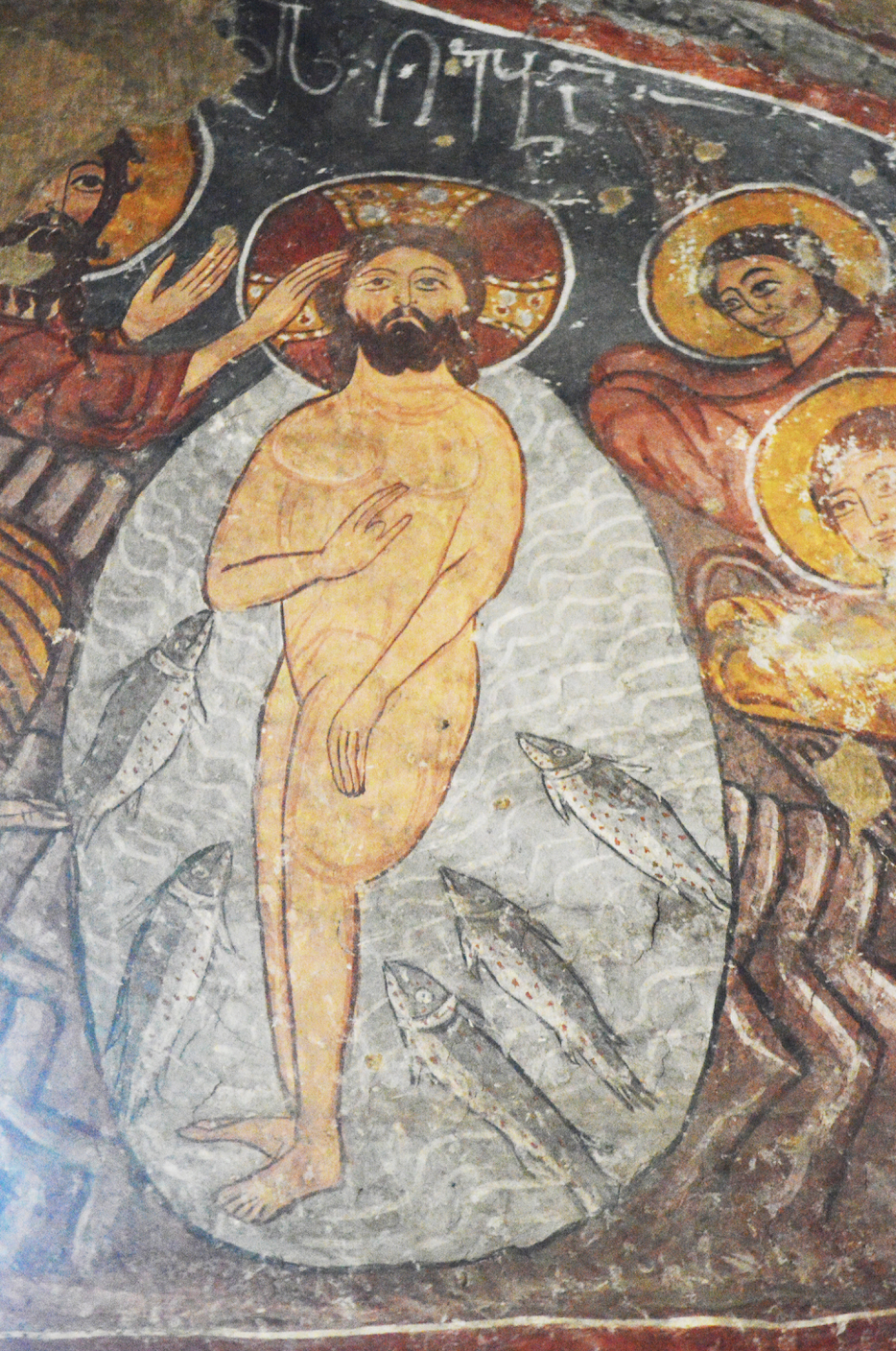
Bugeuli church, the Baptism, detail, 16th c
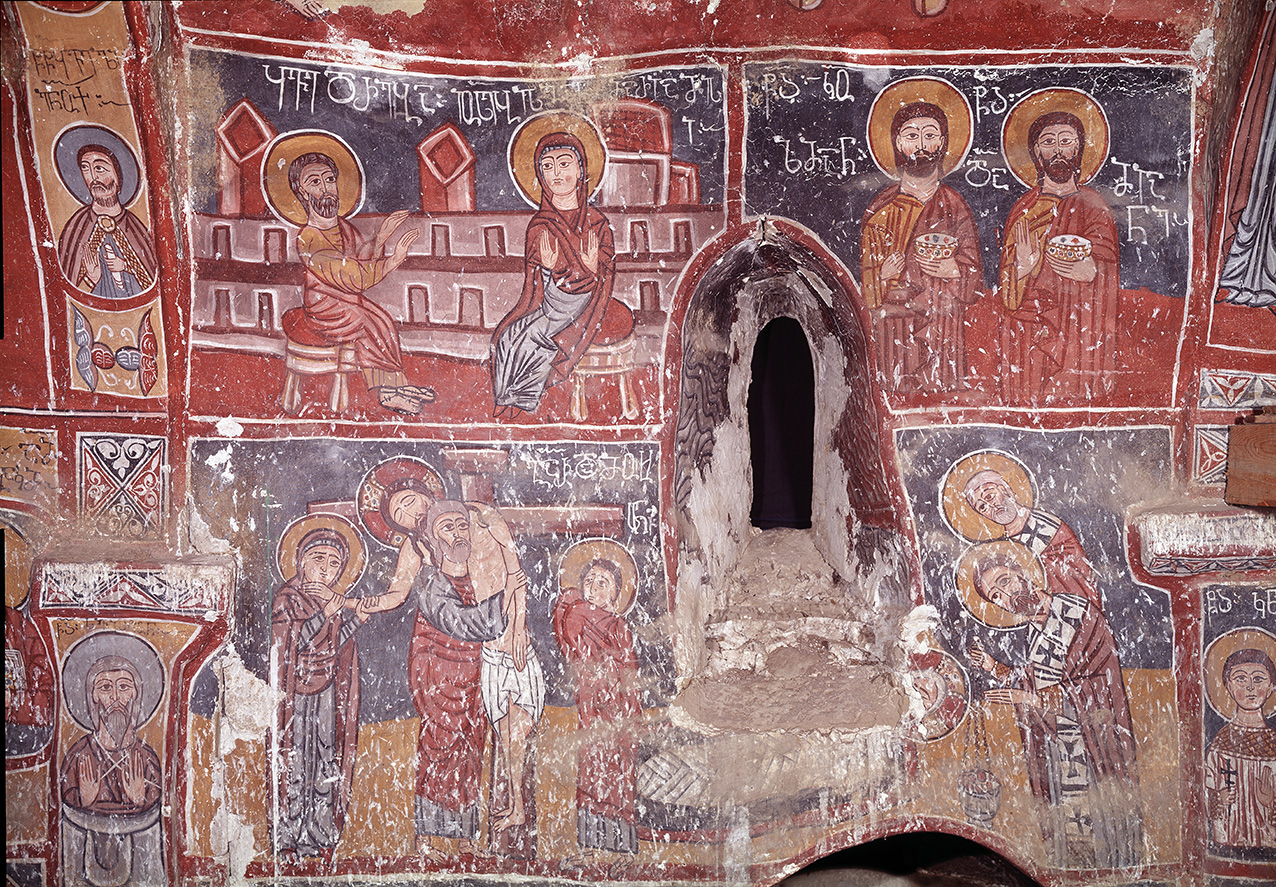
Bugeuli church, painting on the south wall, fragment, 16th c
The Bugeuli murals are an excellent example of the so-called folk (vernacular) trend of mural painting that was widespread throughout most regions of Georgia, especially during the 16th century. They reflect the old traditions of Georgian wall painting in contrast to the Athonite and Cretan painting traditions, and attest to the creativeness of painters from the late medieval period, as well as to the diversity and richness of Georgian culture and art from this period.